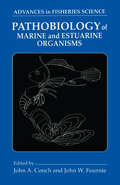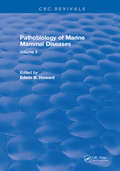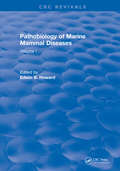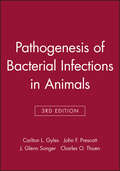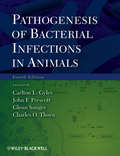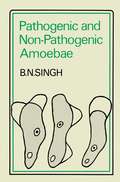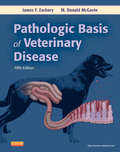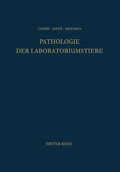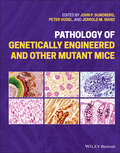- Table View
- List View
Paternalism, Conflict, and Coproduction: Learning from Citizen Action and Citizen Participation in Western Europe (Environment, Development and Public Policy: Environmental Policy and Planning)
by Lawrence Susskind Michael ElliottA research team from the United States has completed an examination of citizen participation experiments in seven European countries. The team included Donald Appleyard, Marc Draisen, David Godschalk, Chester Hartman, Janice Perlman, Hans Spiegel, John Zeisel, and ourselves. This book is a product of our joint efforts. Our studies are aimed at summarizing and sharing what can be learned from recent European efforts to enhance the effectiveness of local government through increased public involvement in the organization and management of public services and urban redevelopment. Almost a year was spent assembling the team, developing a shared framework for analysis and identifying appropriate case study cities. European and American public officials and citizen activists helped us assess the potential impact of such a study on current practice. A second year was spent visiting the European cities and preparing the case-study drafts. Finally, team members gathered in Washington, D. C. , with fifty American and European public officials, citizen activists, and scholars. A two-day symposium provided an exciting opportunity to present preliminary research findings and encourage an exchange of ideas between researchers, activists, and policymakers. The final versions of the case studies that appear in this book, along with several commentaries by symposium participants, are written especially for city officials and citizen activists. We have tried to translate the results of our scholarly inquiry into pragmatic suggestions for officials and activists.
Pathobiology of Marine and Estuarine Organisms (Advances In Fisheries Science Ser.)
by John A. Couch John W. FourniePathobiology of Marine and Estuarine Organisms is a comprehensive, up-to-date review of aquatic animal pathobiology covering infectious and non-infectious diseases of vertebrates such as marine mammals and fishes, in addition to diseases of invertebrates such as crustacea, mollusks, and lower phyla. The book provides critical information on viral, fungal, bacterial, parasitic, and neoplastic diseases of fish and invertebrates. Written by top-notch experts in the field, Pathobiology of Marine and Estuarine Organisms emphasizes pollution-associated diseases and includes an important review on the effects of pollution on marine mammals. The book will be a welcome addition to the libraries of aquatic and marine biologists, aquatic toxicologists, fisheries biologists, aquaculturalists, fish and invertebrate pathologists, and aquatic animal parasitologists.
Pathobiology of Marine and Estuarine Organisms (Advances In Fisheries Science Ser.)
by John A. Couch; John W. FourniePathobiology of Marine and Estuarine Organisms is a comprehensive, up-to-date review of aquatic animal pathobiology covering infectious and non-infectious diseases of vertebrates such as marine mammals and fishes, in addition to diseases of invertebrates such as crustacea, mollusks, and lower phyla. The book provides critical information on viral, fungal, bacterial, parasitic, and neoplastic diseases of fish and invertebrates. Written by top-notch experts in the field, Pathobiology of Marine and Estuarine Organisms emphasizes pollution-associated diseases and includes an important review on the effects of pollution on marine mammals. The book will be a welcome addition to the libraries of aquatic and marine biologists, aquatic toxicologists, fisheries biologists, aquaculturalists, fish and invertebrate pathologists, and aquatic animal parasitologists.
Pathobiology Of Marine Mammal Diseases: Volume I
by HowardThese volumes provide information which will be helpful to comparative pathologists, veterinarians, and all marine scientists and other individuals who are interested in the study of marine mammals, and the diseases they develop in both their feral and captive environment.This publication is a reflection of the observations of the various authors, some of whom have pioneered in this field, and is an attempt to update the available information concerning the natural diseases, and the corresponding pathologic changes in marine mammals.
Pathobiology Of Marine Mammal Diseases: Volume I
by HowardThese volumes provide information which will be helpful to comparative pathologists, veterinarians, and all marine scientists and other individuals who are interested in the study of marine mammals, and the diseases they develop in both their feral and captive environment.This publication is a reflection of the observations of the various authors, some of whom have pioneered in this field, and is an attempt to update the available information concerning the natural diseases, and the corresponding pathologic changes in marine mammals.
Pathobiology Of Marine Mammal Diseases: Volume II
by Edwin B. HowardThese volumes provide information which will be helpful to comparative pathologists, veterinarians, and all marine scientists and other individuals who are interested in the study of marine mammals, and the diseases they develop in both their feral and captive environment.This publication is a reflection of the observations of the various authors, some of whom have pioneered in this field, and is an attempt to update the available information concerning the natural diseases, and the corresponding pathologic changes in marine mammals.
Pathobiology Of Marine Mammal Diseases: Volume II
by Edwin B. HowardThese volumes provide information which will be helpful to comparative pathologists, veterinarians, and all marine scientists and other individuals who are interested in the study of marine mammals, and the diseases they develop in both their feral and captive environment.This publication is a reflection of the observations of the various authors, some of whom have pioneered in this field, and is an attempt to update the available information concerning the natural diseases, and the corresponding pathologic changes in marine mammals.
Pathogenesis of Bacterial Infections in Animals
by Carlton L. Gyles John F. Prescott J. Glenn Songer Charles O. ThoenThis much-anticipated third edition again consolidates the knowledge of more than twenty experts on pathogenesis of animal disease caused by various species or groups of bacteria. Emphasizing pathogenic events at the molecular and cellular levels, the editors and contributors place these developments in the context of the overall picture of disease. Pathogenesis of Bacterial Infections in Animals, Third edition, updates and expands the content of the second edition and includes cutting-edge information from the most current research. Comments on previous editions: "...highly recommended." --The Veterinary Record "...a comprehensive, complete and easy-to-use source of information." --Veterinary Microbiology "...recommended for graduate students and specialists in microbiology, pathology and infectious disease." --U.S. Animal Health Association Newsletter "...a wonderful book." --Journal of the American Veterinary Medical Association "...highly recommended." --The Cornell Veterinarian Graduate students, faculty, researchers, and specialists in microbiology, pathology, and infectious diseases will benefit from this highly-detailed and expanded edition of a popular and well-read veterinary text.
Pathogenesis of Bacterial Infections in Animals
by L. GylesPathogenesis of Bacterial Infections in Animals, Fourth Edition captures the rapid developments in understanding the mechanisms of virulence of the major bacterial pathogens of animals. Now including a color plate section, the book presents an overview of pathogenesis, including relevant events that occur in the herd or flock and its environment, and activities that take place at the cellular and molecular levels. With contributions from 64 experts in the field, this book serves as a great reference for graduate students in veterinary medicine and animal science, microbiologists, virologists and pathologists.
Pathogenesis of Bacterial Infections in Animals
by John F. Prescott John Boyce Janet I. MacInnes Andrew N. Rycroft Filip Van Immerseel José A. Vázquez-BolandPATHOGENESIS OF BACTERIAL INFECTIONS IN ANIMALS Comprehensive review of the major bacterial pathogens of animals, focusing on the current understanding of how they cause disease Pathogenesis of Bacterial Infections in Animals, Fifth Edition is a specialist reference that provides a comprehensive review of bacterial pathogens in animals and their complex interplay with disease processes, offering a complete understanding of how bacteria cause disease in animals. It covers the many recent advances in the field including the newest taxonomies. In this revised and long anticipated fifth edition, additional introductory chapters have been added to set the material in context, and more figures added to integrate and improve understanding and comprehension throughout the text. A companion website presents the figures from the book in PowerPoint and references. This detailed reference includes novel approaches to controlling bacterial pathogens in the light of growing concerns about antimicrobial resistance, with more than 70 expert authors sharing their wisdom on the topic. While molecular pathogenesis is a major aspect in almost every chapter, the authors have been careful to place pathogens in their broader context. Pathogenesis of Bacterial Infections in Animals, Fifth Edition also contains information on: Themes in bacterial pathogenesis, covering the basic elements of pathogenesis, concepts of virulence, host-pathogen interactions and communication, and pathogenesis in the post-genomic era Evolution of bacterial pathogens, covering what they are and how they emerge, along with sources of genetic diversity, population structure, and genome plasticity Understanding of pathogenesis through pathogenomics and bioinformatics, including how mutations generate pathogen diversity, and an overview of genome sequencing technologies Subversion of the immune response by bacterial pathogens, covering subversion of both innate responses and adaptive immunity Pathogenesis of Bacterial Infections in Animals, Fifth Edition is an essential resource for graduate students in veterinary medicine and animal science, and for veterinary microbiologists, pathologists, infectious disease experts, and others interested in bacterial disease. It is the only book to cover this topic to this depth through the wealth of insight of dozens of qualified and practicing professionals.
Pathogenesis of Bacterial Infections in Animals
by John F. Prescott Janet I. MacInnes Filip Van Immerseel John D. Boyce Andrew N. Rycroft José A. Vázquez-BolandPATHOGENESIS OF BACTERIAL INFECTIONS IN ANIMALS Comprehensive review of the major bacterial pathogens of animals, focusing on the current understanding of how they cause disease Pathogenesis of Bacterial Infections in Animals, Fifth Edition is a specialist reference that provides a comprehensive review of bacterial pathogens in animals and their complex interplay with disease processes, offering a complete understanding of how bacteria cause disease in animals. It covers the many recent advances in the field including the newest taxonomies. In this revised and long anticipated fifth edition, additional introductory chapters have been added to set the material in context, and more figures added to integrate and improve understanding and comprehension throughout the text. A companion website presents the figures from the book in PowerPoint and references. This detailed reference includes novel approaches to controlling bacterial pathogens in the light of growing concerns about antimicrobial resistance, with more than 70 expert authors sharing their wisdom on the topic. While molecular pathogenesis is a major aspect in almost every chapter, the authors have been careful to place pathogens in their broader context. Pathogenesis of Bacterial Infections in Animals, Fifth Edition also contains information on: Themes in bacterial pathogenesis, covering the basic elements of pathogenesis, concepts of virulence, host-pathogen interactions and communication, and pathogenesis in the post-genomic era Evolution of bacterial pathogens, covering what they are and how they emerge, along with sources of genetic diversity, population structure, and genome plasticity Understanding of pathogenesis through pathogenomics and bioinformatics, including how mutations generate pathogen diversity, and an overview of genome sequencing technologies Subversion of the immune response by bacterial pathogens, covering subversion of both innate responses and adaptive immunity Pathogenesis of Bacterial Infections in Animals, Fifth Edition is an essential resource for graduate students in veterinary medicine and animal science, and for veterinary microbiologists, pathologists, infectious disease experts, and others interested in bacterial disease. It is the only book to cover this topic to this depth through the wealth of insight of dozens of qualified and practicing professionals.
The Pathogenic Enteric Protozoa: Giardia, Entamoeba, Cryptosporidium and Cyclospora (World Class Parasites #8)
by Charles R. Sterling Rodney D. AdamGiardia duodenalis (=G. lamblia), Entamoeba histolytica, Cryptosporidium parvum and Cyclospora cayetanensis are more than just a mouthful for most who might encounter them. These protozoan parasitic agents contribute significantly to the staggering caseload of diarrheal disease morbidity encountered in developing world nations. Compounding the issue of their mere presence is the fact that standard ova and parasite exams frequently do not detect these infections. Detectable stages may be shed intermittently or require specialized staining procedures. Added to this is the often large number of asymptomatic carriers who serve as reservoirs for infecting others. These parasites are also not strangers to more developed nations, having responsibility for both small and large-scale disease outbreaks. In such settings they may be even more difficult to detect simply because they are frequently overlooked in the grand scheme of disease causing possibilities. They share common features; all are Protozoa, all possess trophic stages that inhabit the gastrointestinal tract, all have the ability to produce disease and in some instances death, and all produce environmentally stable cysts or oocysts, which ensure their transmissibility. In other ways, these organisms are profoundly different. Giardia is a flagellate that inhabits the gut lumen in close association with enterocytes. Entamoeba is an amoeba that preferentially inhabits the mucosal region of the gut lumen, but which may, under certain circumstances, become invasive. Cryptosporidium and Cyclospora are obligate intracellular coccidians, each taking up a unique niche within their respective host enterocytes.
Pathogens Crossing Borders: Global Animal Diseases and International Responses, 1860–1947 (Routledge Studies in the History of Science, Technology and Medicine #45)
by Cornelia KnabThe increasing globalization of trade, travel and transport since the mid-19th century had unwelcome consequences – one of them was the spread of contagious animal diseases over greater distances in a shorter time than ever before. Borders and national control strategies proved to be insufficient to stop the pathogens. Not surprisingly, the issue of epizootics (epidemics of animals) was among the first topics to be addressed by international meetings from the 1860s onwards. Pathogens Crossing Borders explores the history of international efforts to contain and prevent the spread of animal diseases from the early 1860s to the years after the Second World War. As an innovative contribution to global history and the history of internationalism, the book investigates how disease experts, politicians and state authorities developed concepts, practices and institutional structures at the international level to tackle the spread of animal diseases across borders. By following their activities in dealing with a problem area which was – and is today – of enormous political, social, public health and economic relevance, the book reveals the historical challenges of finding common international responses to complex and pressing global issues for which there are no easy solutions.
Pathogens Crossing Borders: Global Animal Diseases and International Responses, 1860–1947 (Routledge Studies in the History of Science, Technology and Medicine #45)
by Cornelia KnabThe increasing globalization of trade, travel and transport since the mid-19th century had unwelcome consequences – one of them was the spread of contagious animal diseases over greater distances in a shorter time than ever before. Borders and national control strategies proved to be insufficient to stop the pathogens. Not surprisingly, the issue of epizootics (epidemics of animals) was among the first topics to be addressed by international meetings from the 1860s onwards. Pathogens Crossing Borders explores the history of international efforts to contain and prevent the spread of animal diseases from the early 1860s to the years after the Second World War. As an innovative contribution to global history and the history of internationalism, the book investigates how disease experts, politicians and state authorities developed concepts, practices and institutional structures at the international level to tackle the spread of animal diseases across borders. By following their activities in dealing with a problem area which was – and is today – of enormous political, social, public health and economic relevance, the book reveals the historical challenges of finding common international responses to complex and pressing global issues for which there are no easy solutions.
Pathologic Basis of Veterinary Disease E-BOOK: Pathologic Basis of Veterinary Disease E-BOOK
by James F. Zachary**Selected for Doody's Core Titles® 2024 in Veterinary Medicine** Use the veterinarian's #1 reference on general pathology and the pathology of organ systems! Pathologic Basis of Veterinary Disease, 7th Edition helps you understand and diagnose diseases of domestic animals by using the latest scientific and medical research. Focusing on dogs, cats horses, cattle, sheep, goats, and pigs, this reference describes and vividly illustrates and explores the pathogeneses of animal diseases, how cells and tissues respond to injury, and the morphology (lesions) of this injury. New to this edition is basic coverage of tumor, inflammatory, and microbial cytology. Edited by veterinary pathologist James F. Zachary and a team of expert veterinary pathologists, this book includes access to an enhanced eBook with every new print purchase, featuring a fully searchable version of the entire text, an image collection, and much more – and available on a variety of devices. - Clear, up-to-date illustrations and explanations of the macroscopic (gross) and microscopic lesions resulting from diseases occurring in domestic animals - Complete coverage of both general pathology and the pathology of organ systems that includes the latest research, practice, and diagnostic information on disease mechanisms, pathogenesis, and lesions. - Clear explanations of disease mechanisms that describe cell, tissue, and organ system responses to injury and infection. - Easy-to-follow organization for each systemic disease chapter including a brief review of the study of diseases that occur in specific tissues, organs, and organ systems, with basic principles related to anatomy, structure, and function, followed by congenital and functional abnormalities and discussions of infectious disease responses, helping students apply principles to veterinary practice. - More than 2,100 full-color illustrations featuring color photographs, schematics, flow charts, and diagrammatic representations of disease processes as well as summary tables and boxes, making it easier to understand difficult concepts. - Content on cellular and organ system pathology updated throughout the book, with expanded coverage of genetics and disease. - Key Readings Index in each chapter with page numbers for key topics. - Essential Concept boxes in each General Pathology chapter break down complicated topics that are critical to understanding lesions and pathogeneses. - More than 20 recognized experts deliver the most relevant information for the practitioner, student, or individual preparing for the American College of Veterinary Pathologists' board examination. - An enhanced eBook is included with new print purchase, featuring the complete, fully searchable text plus an image collection; the text, tables, and boxes linked to the website that are cited throughout the book; ten new appendices that focus on veterinary diagnostic pathology, postmortem examination, interpretation of lesions, and more; plus an established appendix of photographic techniques used in veterinary diagnostic pathology.
Pathologic Basis of Veterinary Disease - E-Book
by James F. Zachary M. Donald McGavinWith over 2,000 full-color illustrations, Pathologic Basis of Veterinary Disease, 5th Edition provides complete coverage of both general pathology and pathology of organ systems in one convenient resource. In-depth explanations cover the responses of cells, tissues, and organs to injury and infection. Expert researchers James F. Zachary and M. Donald McGavin keep you up to date with the latest advances in cellular and molecular pathology plus expanded coverage of genetics and disease, incorporating the newest insights into the study of disease mechanisms, genesis, and progression. Already the leading reference for pathology, this edition also includes an enhanced website with images of less common diseases and and guidelines for performing a complete, systematic necropsy.Each chapter is consistently organized, presenting information on structure, function, portals of entry, defense mechanisms, responses to injury, and diseases organized by species.Full-color illustrations, schematics, flow charts, and diagrammatic representations of disease processes make it easier to understand difficult concepts.Discussions of pathologic processes and individual disorders are integrated with the latest established information available.Clear, up-to-date explanations of disease mechanisms describe the cell, tissue, and organ response to injury and infection.Over 20 recognized experts deliver the most relevant information, whether you're a practitioner, student, or preparing for the American College of Veterinary Pathology board examination. Updated content on cellular and organ system pathology provides the latest on the science of inflammation, cellular injury, molecular carcinogenesis, and pathogenesis.NEW topics include the genetic basis of disease, the monocyte-macrophage system, diseases of the ear, and disorders of ligaments and joints and of the peritoneum.NEW coverage of World Organization for Animal Health (OIE) reportable diseases ("foreign animal diseases") adds information on microorganisms that have catastrophic impact on livestock health and production.NEW Mechanisms of Microbial Infections chapter adds in-depth coverage of the means by which microbes encounter, colonize, and cause disease in animals in a chronological sequence of events.NEW and updated flow charts, schematic illustrations, and diagrams of disease processes summarize important information and clarify complex concepts. An enhanced companion website includes all the images from the book, plus additional images and schematic illustrations of common diseases; guidelines for performing a complete, systematic necropsy and appropriate sample acquisition for selected organ systems; and a glossary of terms to accompany selected organ systems.
Pathologic Basis of Veterinary Disease Expert Consult - E-BOOK: Pathologic Basis of Veterinary Disease Expert Consult - E-BOOK
by James F. ZacharyDiagnose and manage diseases using the newest information and research! Pathologic Basis of Veterinary Disease – Expert Consult, 6th Edition provides complete, illustrated coverage of both general pathology and the pathology of organ systems of domestic animals. Addressing species from dogs and cats to pigs and cattle — and many more — this reference describes the lesions and pathogeneses of diseases, how cells and tissues respond to injury, and the interplay of host defense mechanisms with microbes and injurious agents. Updates include the latest scientific advances and diagnostic information. Written by a team of expert contributors, this book includes an Expert Consult website with access to the complete digital book plus thousands of images and guidelines for sample acquisition and for performing a complete necropsy. - Complete coverage of both general pathology and pathology of organ systems is provided in one convenient resource, and includes the latest information available. - Over 20 recognized experts deliver the most relevant information for the practitioner, student, or individual preparing for the American College of Veterinary Pathology board examination. - UPDATED content on cellular and organ system pathology includes the latest insights into the science of inflammation, healing, and molecular carcinogenesis, as well as expanded coverage of genetics and disease. - Over 2,100 full-color illustrations include color schematics, flow charts, and diagrammatic representations of disease processes as well as summary tables and boxes, making it easier to understand difficult concepts. - Clear, up-to-date explanations of disease mechanisms describe cell, tissue, and organ response to injury and infection. - Easy-to-follow organization for each systemic disease chapter includes a brief review of basic principles related to anatomy, structure, and function, followed by congenital and functional abnormalities and discussions of infectious disease responses, helping you apply principles to veterinary practice. - Expert Consult website provides the reader with the complete digital text plus: An image collection; guidelines for performing a complete, systematic necropsy and appropriate sample acquisition for all organ systems; a comprehensive glossary; and an appendix of photographic techniques in veterinary pathology. - NEW line drawings and schematic diagrams depict current concepts about pathogeneses and lesions of veterinary diseases. - NEW! Essential Concept boxes in each basic pathology chapter break down long and complicated topics, making it easier to understand lesions and pathogeneses in the 'organ system' chapters. - NEW! Key Readings Index at the beginning of each chapter includes page numbers, making important information easy to locate.
Pathologie der Laboratoriumstiere
by Wolfgang Bargmann Paul Cohrs Rudolf JaffeIm Jahre 1931 erschien, herausgegeben von JAFFE, das Buch: "Anatomie und Pathologie der Spontanerkrankungen der kleinen Laboratoriumstiere". Der Zweck des Buches war, dem experimentell arbeitenden Mediziner eine Unterlage dafür zu geben, ob seine Befunde tatsächlich als Ergebnis seiner Versuche zu deuten seien oder ob gleiche Veränderungen auch spontan auftreten könnten. Wir glauben, daß es damals diesen Zweck erfüllt hat, wie aus zahlreichen, dem Werk entnommenen und in aller Welt erschienenen Zitaten hervorgeht. Ein weiterer Zweck des Buches war, Anregung zu geben, Beobachtungen von spontanen Ver änderungen mehr als bis dahin zu veröffentlichen; die vielen inzwischen er schienenen Arbeiten zu diesem Problem bestätigen, daß auch dieses Ziel erreicht wurde. Da seit dem Erscheinen dieses Buches 26 Jahre verstrichen und alle Exemplare längst vergriffen sind, war eine neue Auflage erforderlich. Als vor 3 Jahren der Verlag diesem Plan nähertreten konnte, ergaben sich neue Schwierigkeiten. Zunächst glaubte der damalige Herausgeber (JAFF:E), diese Aufgabe nicht mehr allein übernehmen zu können, da er im Ausland lebt; so kamen die Mitherausgeber (COHRS und MEESSEN) hinzu. Ferner zeigte sich, daß die neue Bearbeitung gegenüber der ersten keineswegs leichter geworden war, weil viele Veröffentlichungen aus dem Schrifttum der Welt zusammengetragen werden mußten. Die Mitarbeiter, die in freundlicher Weise ihre Hilfe zugesagt hatten, mußten deshalb oft eine größere Arbeit leisten, als das fertige Werk ver muten läßt.
Pathology and Epidemiology of Aquatic Animal Diseases for Practitioners
by Laura Urdes Chris Walster Julius TepperPathology and Epidemiology of Aquatic Animal Diseases for Practitioners Comprehensive reference on the diseases and applied epidemiology of all aquatic animal taxa, including invertebrates and vertebrates Pathology and Epidemiology of Aquatic Animal Diseases for Practitioners provides information on the diseases and applied epidemiology of all aquatic animal taxa, including invertebrates and vertebrates, along with information on applied epidemiology, acknowledging the One Health concept, and discussion on probabilities of disease outbreaks occurring and assesses the economic costs of treating those outbreaks, if applicable. Divided into two sections, the book looks at the pathology of major aquatic taxa and their associated infectious diseases—parasitic, viral, and bacterial—and non-infectious diseases. Each includes an overview, their host range and transmission, signs and diagnosis, differentials, and treatment and management. These assets are accompanied by clinical signs-lesion differential charts. Sample topics discussed in Pathology and Epidemiology of Aquatic Animal Diseases include: Echinoderms, including crinoidea (crinoids, sea lilies, feather stars, and asteroidea), sea stars/starfish, and ophiuroidea (brittle stars and basket stars) Reptiles, including turtles (freshwater and marine), crocodilians, marine iguanas, and sea snakes Pinnipeds, including otariidae (eared seals), odobenidae (walruses), phocidae (earless seals), mustelidae (otters), and sirenia (manatees and dugongs) Tropical marine aquarium fish (damselfish, angelfish, gobies, wrasses, parrotfish, butterfly fish, and clownfish) and anemones. A highly useful reference for veterinary practitioners, academic staff, and researchers, Pathology and Epidemiology of Aquatic Animal Diseases is also suitable for those who are interested in aquatic veterinary medicine and serves as a companion to Fundamentals of Aquatic Veterinary Medicine, written by the same editorial team.
Pathology and Epidemiology of Aquatic Animal Diseases for Practitioners
by Laura Urdes Chris Walster Julius TepperPathology and Epidemiology of Aquatic Animal Diseases for Practitioners Comprehensive reference on the diseases and applied epidemiology of all aquatic animal taxa, including invertebrates and vertebrates Pathology and Epidemiology of Aquatic Animal Diseases for Practitioners provides information on the diseases and applied epidemiology of all aquatic animal taxa, including invertebrates and vertebrates, along with information on applied epidemiology, acknowledging the One Health concept, and discussion on probabilities of disease outbreaks occurring and assesses the economic costs of treating those outbreaks, if applicable. Divided into two sections, the book looks at the pathology of major aquatic taxa and their associated infectious diseases—parasitic, viral, and bacterial—and non-infectious diseases. Each includes an overview, their host range and transmission, signs and diagnosis, differentials, and treatment and management. These assets are accompanied by clinical signs-lesion differential charts. Sample topics discussed in Pathology and Epidemiology of Aquatic Animal Diseases include: Echinoderms, including crinoidea (crinoids, sea lilies, feather stars, and asteroidea), sea stars/starfish, and ophiuroidea (brittle stars and basket stars) Reptiles, including turtles (freshwater and marine), crocodilians, marine iguanas, and sea snakes Pinnipeds, including otariidae (eared seals), odobenidae (walruses), phocidae (earless seals), mustelidae (otters), and sirenia (manatees and dugongs) Tropical marine aquarium fish (damselfish, angelfish, gobies, wrasses, parrotfish, butterfly fish, and clownfish) and anemones. A highly useful reference for veterinary practitioners, academic staff, and researchers, Pathology and Epidemiology of Aquatic Animal Diseases is also suitable for those who are interested in aquatic veterinary medicine and serves as a companion to Fundamentals of Aquatic Veterinary Medicine, written by the same editorial team.
Pathology of Genetically Engineered and Other Mutant Mice
by John P. Sundberg Peter Vogel Jerrold M. WardPATHOLOGY OF GENETICALLY ENGINEERED AND OTHER MUTANT MICE An updated and comprehensive reference to pathology in every organ system in genetically modified mice The newly revised and thoroughly updated Second Edition of Pathology of Genetically Engineered and Other Mutant Mice delivers a comprehensive resource for pathologists and biomedical scientists tasked with identifying and understanding pathologic changes in genetically modified mice. The book is organized by body system, and includes descriptions and explanations of a wide range of findings, as well as hundreds of color photographs illustrating both common and rare lesions that may be found in genetically engineered and wild type mice. The book is written by experienced veterinary and medical pathologists working in veterinary medical colleges, medical colleges, and research institutes. Covering the latest discoveries in mouse pathology resulting from advancements in biotechnology research over the last 30 years, this singular and accessible resource is a must-read for veterinary and medical pathologists and researchers working with genetically engineered and other mice. Readers will also benefit from: A thorough introduction to mouse pathology and mouse genetic nomenclature, as well as databases useful for analysis of mutant mice An exploration of concepts related to validating animal models, including the Cinderella Effect Practical discussions of basic necropsy methods and grading lesions for computational analyses Concise diagnostic approaches to the respiratory tract, the oral cavity and GI tract, the cardiovascular system, the liver and pancreas, the skeletal system, and other tissuesl As a one-stop and up to date reference on mouse pathology, Pathology of Genetically Engineered and Other Mutant Mice is an essential book for veterinary and medical pathologists, as well as for scientists, researchers, and toxicologists whose work brings them into contact with genetically modified mice.
Pathology of Genetically Engineered and Other Mutant Mice
by Peter Vogel John P. Sundberg Jerrold M. WardPATHOLOGY OF GENETICALLY ENGINEERED AND OTHER MUTANT MICE An updated and comprehensive reference to pathology in every organ system in genetically modified mice The newly revised and thoroughly updated Second Edition of Pathology of Genetically Engineered and Other Mutant Mice delivers a comprehensive resource for pathologists and biomedical scientists tasked with identifying and understanding pathologic changes in genetically modified mice. The book is organized by body system, and includes descriptions and explanations of a wide range of findings, as well as hundreds of color photographs illustrating both common and rare lesions that may be found in genetically engineered and wild type mice. The book is written by experienced veterinary and medical pathologists working in veterinary medical colleges, medical colleges, and research institutes. Covering the latest discoveries in mouse pathology resulting from advancements in biotechnology research over the last 30 years, this singular and accessible resource is a must-read for veterinary and medical pathologists and researchers working with genetically engineered and other mice. Readers will also benefit from: A thorough introduction to mouse pathology and mouse genetic nomenclature, as well as databases useful for analysis of mutant mice An exploration of concepts related to validating animal models, including the Cinderella Effect Practical discussions of basic necropsy methods and grading lesions for computational analyses Concise diagnostic approaches to the respiratory tract, the oral cavity and GI tract, the cardiovascular system, the liver and pancreas, the skeletal system, and other tissuesl As a one-stop and up to date reference on mouse pathology, Pathology of Genetically Engineered and Other Mutant Mice is an essential book for veterinary and medical pathologists, as well as for scientists, researchers, and toxicologists whose work brings them into contact with genetically modified mice.
Pathology of Laboratory Rodents and Rabbits
by Stephen W. Barthold Stephen M. Griffey Dean H. PercyNow in its fourth edition, Pathology of Laboratory Rodents and Rabbits has become a standard text for veterinary pathologists, laboratory animal veterinarians, students, and others interested in these species. • The standard reference on the pathogenesis and cardinal diagnostic features of diseases of mice, rats, hamsters, gerbils, guinea pigs, and rabbits • Expanded coverage of rabbit disease, normal anatomic features, and biology • Over 450 color photographs illustrating gross and microscopic pathology • Companion website offering images from the text in PowerPoint
Pathology of Laboratory Rodents and Rabbits
by Stephen W. Barthold Stephen M. Griffey Dean H. PercyNow in its fourth edition, Pathology of Laboratory Rodents and Rabbits has become a standard text for veterinary pathologists, laboratory animal veterinarians, students, and others interested in these species. • The standard reference on the pathogenesis and cardinal diagnostic features of diseases of mice, rats, hamsters, gerbils, guinea pigs, and rabbits • Expanded coverage of rabbit disease, normal anatomic features, and biology • Over 450 color photographs illustrating gross and microscopic pathology • Companion website offering images from the text in PowerPoint

